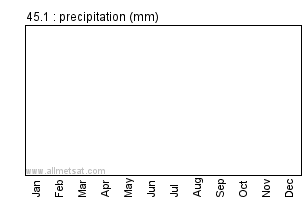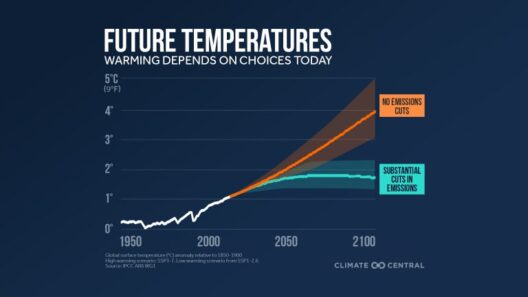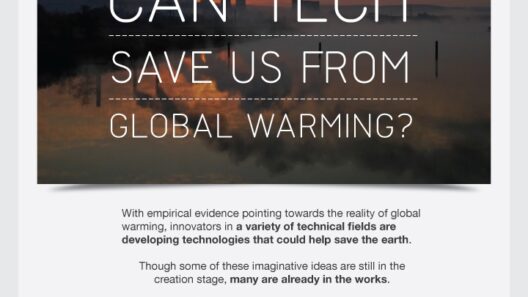Global warming is an existential threat that requires urgent action not only from policymakers but also from innovators and technologists. The intersection of climate science and technological ingenuity could pave the way for breakthroughs that might mitigate the ravaging effects of climate change. While the problem is arduous, a closer inspection reveals a myriad of innovative technologies poised to attack the climate crisis from various angles.
One of the most promising avenues in technology is renewable energy. The utilization of solar, wind, and hydropower is not merely a trend; it is the foundation for a sustainable energy future. Photovoltaic cells convert sunlight directly into electricity, making solar power a cornerstone in the quest for an ecologically balanced world. Wind energy, harnessed through advanced turbine designs, can generate substantial electrical power with minimal environmental impact. Moreover, innovations in energy storage, such as advanced battery technology, ensure that the energy harvested from these sources can be conserved and utilized, even when sunlight is scarce or winds are calm.
However, the dialogue cannot solely center around renewable generation. Energy efficiency is just as crucial. Intelligent building technologies that utilize Internet of Things (IoT) systems constitute a transformative approach. Smart thermostats, occupancy sensors, and energy management systems facilitate optimal energy consumption, reducing waste and lowering emissions. By aligning infrastructural innovation with behavioral change, these technologies can contribute significantly toward a reduction in greenhouse gas emissions.
Further, an emerging trend in sustainable technology is carbon capture and storage (CCS). The ability to pull carbon dioxide from the atmosphere and sequester it underground or use it in industrial processes could radically transform how industries approach emissions. New materials, such as metal-organic frameworks, have demonstrated extraordinary potential in capturing CO2 more efficiently. Scaling CCS technologies not only aids in keeping historical emissions in check but also provides a viable path toward net-zero emissions in heavy industry.
Another fascinating technology making waves in the realm of climate solutions is the application of artificial intelligence (AI). AI can analyze vast datasets to optimize energy consumption across multiple sectors, from transportation to agricultural practices. For instance, AI algorithms can enhance the efficiency of electric vehicle (EV) charging, dynamically routing power based on grid demands and sustainability metrics. Moreover, machine learning can refine agricultural methods, helping farmers determine the best times to plant, water, and harvest crops, thereby reducing resource waste and enhancing yields. The intersection of data science and environmental stewardship opens unparalleled opportunities for informed decision-making.
Hydrogen technology, particularly green hydrogen derived from renewable sources, represents another intriguing frontier. Hydrogen has the potential to serve as an energy carrier that can power everything from vehicles to industrial processes with minimal environmental repercussions when produced without fossil fuels. The development of efficient electrolyzers is crucial for transforming surplus renewable energy into hydrogen, making it viable as a clean fuel alternative and a versatile energy storage medium.
Biotechnology also contributes significantly to combating global warming by enhancing carbon sequestration and producing sustainable biofuels. Genetically engineered crops, specifically designed to grow in extreme climates or poorer soils, can contribute to food security while requiring fewer resources. Further, these bioengineered plants may absorb more carbon dioxide than their traditional counterparts, thus helping mitigate climate change through enhanced photosynthesis.
A lesser-known yet equally vital approach is geoengineering. This umbrella term refers to large-scale interventions aimed at counteracting climate change. Techniques such as solar radiation management (SRM) and ocean fertilization have been proposed as potential strategies to reduce global temperatures. While the efficacy and safety of these interventions remain points of contention, they embody the desperate search for solutions in an increasingly warming world. Ethical considerations and governance frameworks surrounding geoengineering must be meticulously evaluated to ensure responsible implementation.
Transport plays a quintessential role in the global warming saga. The transition to electric and hydrogen-powered vehicles, supported by a robust charging infrastructure, illustrates how technology can transform mobility. Autonomous vehicles could also alleviate congestion and optimize traffic flow, leading to reduced emissions. Coupled with advancements in public transportation systems powered by renewable energy, the collective impact could profoundly lessen the carbon footprint associated with travel.
Finally, the nexus of technology and public awareness cannot be overlooked. Platforms that harness data visualizations, simulation technologies, and social media campaigns can galvanize grassroots movements. Engaging communities through digital tools enables citizens to partake in sustainability efforts while increasing the urgency surrounding climate action.
In conclusion, technology holds the promise of profoundly altering the trajectory of global warming. From renewable energy systems and energy efficiency technologies to biotech solutions and social engagement platforms, the arsenal is vast and varied. While the challenge is monumental, the innovative capacity of humanity provides a glimmer of hope that, with concerted effort and collaboration, the worst impacts of climate change can be averted. Ultimately, leveraging these breakthroughs demands not only investment but also a paradigm shift in how society perceives and engages with the planet’s ecosystems. Every step toward embracing technology as a force for good can contribute to a healthier, more sustainable world.








